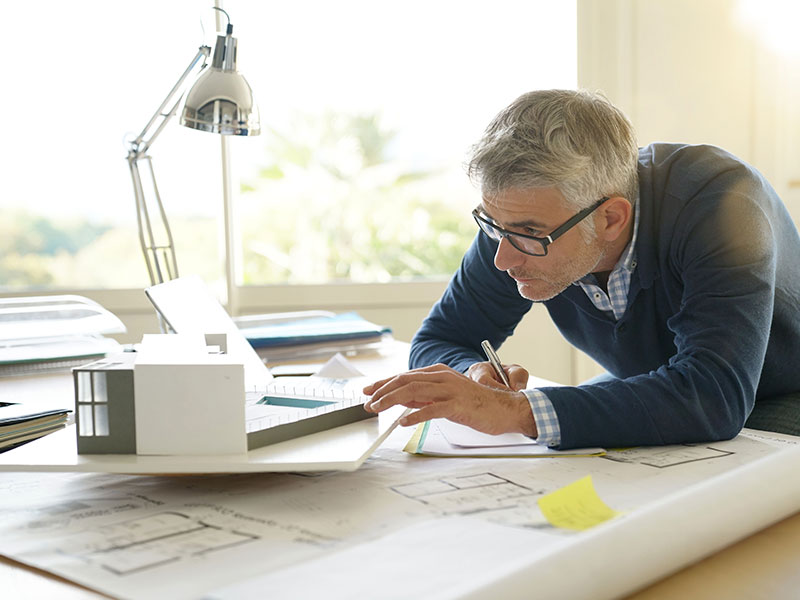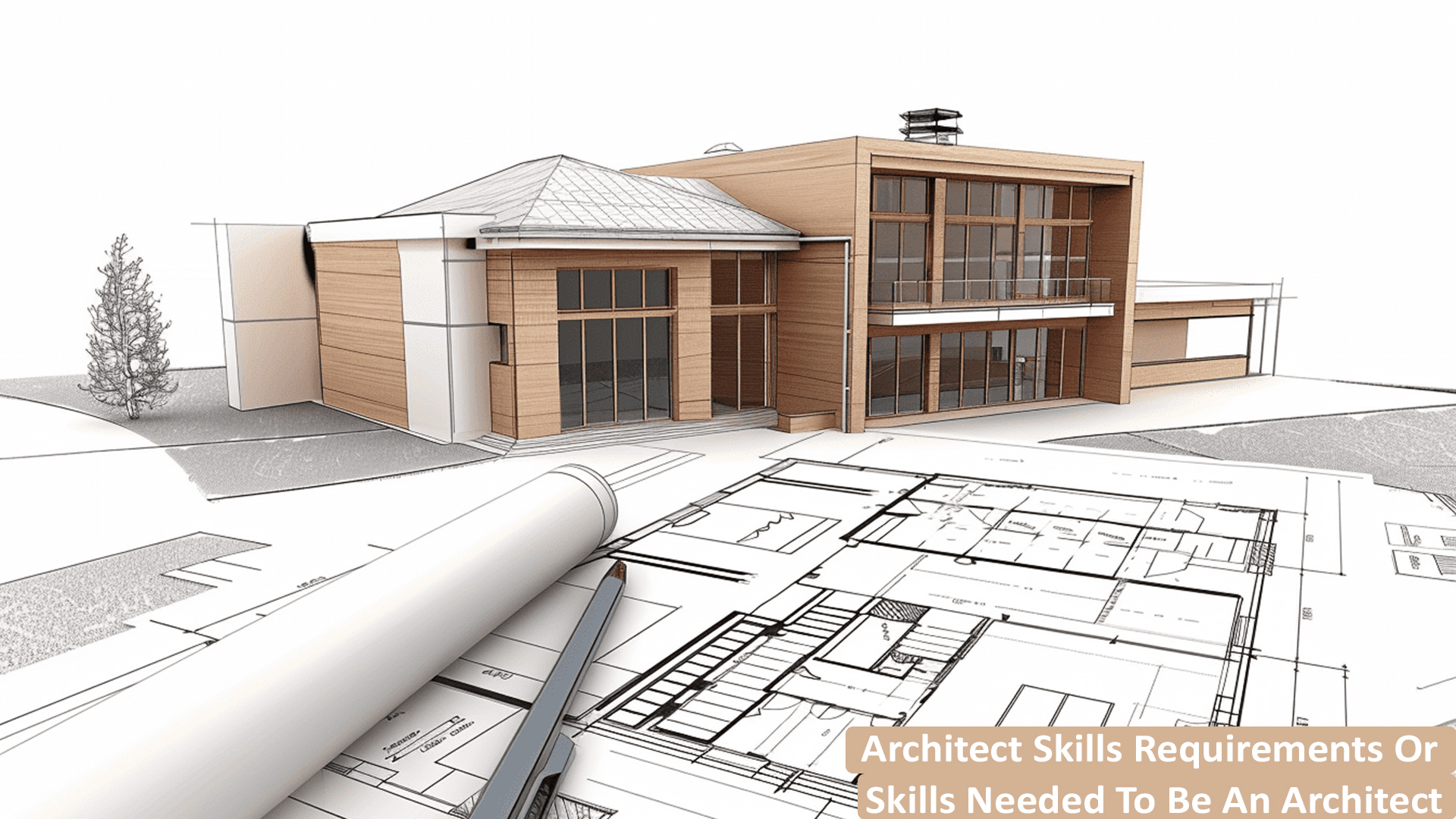Architect Services Explained: What to Expect from Beginning to End
Architect Services Explained: What to Expect from Beginning to End
Blog Article
Comprehending the Diverse Career Paths Available for Aspiring Architect
As a hopeful Architect, you have a globe of career courses waiting for you. Whether you're attracted to conventional style or the nuances of lasting design, there's a specific niche that straightens with your interests.
Conventional Architecture: Designing Buildings and Structures
Conventional architecture concentrates on developing buildings and frameworks that blend performance with visual allure. Your designs can show social heritage, showcasing neighborhood traditions while satisfying modern demands.
You'll develop abilities in composing, model-making, and website analysis, permitting you to imagine and communicate your ideas successfully. Involving with customers, you'll need to comprehend their vision and convert it right into possible styles.
Furthermore, constructing codes and sustainability techniques are important in your job, ensuring your frameworks are environmentally friendly and risk-free. As you expand in your occupation, you'll locate possibilities in domestic, commercial, or also repair jobs, each offering special challenges. Welcoming conventional architecture leads the method for a meeting career that admires the past while forming the future.
Urban Planning: Shaping Communities and Public Spaces
As an ambitious Architect, you can play an important duty as a city planner, changing exactly how areas operate and connect. By employing neighborhood engagement approaches, you'll guarantee that homeowners have a voice fit their environment. Plus, incorporating sustainable style concepts will assist create rooms that not only meet today's demands but additionally shield the future.
Duty of Urban Planners
While lots of might assume of architects as the sole dreamers behind structures, urban organizers play an important role in shaping the broader landscape of neighborhoods and public areas. They evaluate land usage, zoning regulations, and community needs to produce lasting atmospheres that enhance lifestyle. By collaborating with various stakeholders, you'll aid make parks, transport systems, and suburbs that advertise social communication and access. Urban organizers also focus on ecological considerations, ensuring that growths incorporate green rooms and support biodiversity. Your experience in spatial layout and area dynamics enables you to visualize future growth while preserving social heritage. In this vital role, you'll directly affect exactly how people experience their environments, making every project a possibility for positive adjustment.
Neighborhood Involvement Techniques
Effective community involvement methods are crucial for metropolitan coordinators to assure that the voices of homeowners are heard and valued in the preparation process. To promote significant dialogue, you must prioritize open online forums and workshops where community members can express their concepts and concerns. By proactively incorporating and paying attention responses, you'll develop areas that show the neighborhood's needs, eventually leading to even more effective and lasting urban settings.
Lasting Layout Principles
When designing city spaces, incorporating lasting layout principles is critical for producing settings that grow both environmentally and socially. You must start by concentrating on power efficiency, using products that minimize waste and advertise recycling. Take into consideration integrating environment-friendly spaces, like yards and parks, to boost biodiversity and boost air top quality. Advertising walkability and public transport can minimize reliance on vehicles, fostering a healthier neighborhood.
Creating with water conservation in mind is additionally vital-- think of rainfall gardens and absorptive surface areas to take care of stormwater. Including neighborhood members during the planning procedure warranties that the rooms you develop fulfill their needs and motivate social communication. By welcoming these principles, you'll add to vivid, lasting city landscapes that profit every person.

Landscape Architecture: Creating Lasting Exterior Atmospheres
As you check out landscape architecture, you'll uncover essential layout concepts that develop beautiful and practical exterior spaces. Sustainable methods play a vital role in making sure these environments thrive while minimizing environmental effect. And also, you'll discover a range of job possibilities that enable you to make a real distinction in how people interact with nature.
Layout Concepts in Landscape
Recognizing layout concepts in landscape design is essential for developing lasting exterior atmospheres that balance with nature. You'll require to consider components like range, equilibrium, and proportion to ensure your designs really feel natural and welcoming. Incorporating native plants not just enhances biodiversity but additionally lowers water use, making your landscape resilient. Believe regarding the circulation of room and just how individuals connect with it; paths and seating areas need to welcome expedition and relaxation. Furthermore, pay focus to seasonal adjustments, designing with products that complement the environments year-round (Architect). By focusing on sustainability and aesthetic appeals, you can produce outside rooms that enrich the neighborhood and advertise health. Welcoming these principles will certainly establish a strong foundation for your occupation in landscape style.
Sustainable Practices Introduction
Sustainable methods in landscape architecture not only concentrate on visual appeals however additionally prioritize eco-friendly health and resource preservation. You can develop spaces that advertise dirt wellness, such as utilizing natural products and practicing permaculture concepts. Ultimately, these methods assure your designs benefit both people and the atmosphere for years to come.
Occupation Opportunities Exploration
With a strong foundation in lasting techniques, landscape architecture provides a variety of job paths that allow you to make a significant effect on the environment. You could work as a landscape designer, producing visually pleasing and useful outdoor spaces, or specialize in ecological remediation, assisting to revitalize broken ecosystems. Urban planners commonly work together with landscape engineers to develop environment-friendly rooms in city setups, improving city livability. If you're passionate regarding education and learning, think about ending up being a landscape design educator, inspiring future generations. Additionally, you might collaborate with nonprofits concentrated on ecological sustainability or take part in study to introduce brand-new methods. Each path not only shapes lovely atmospheres however also cultivates a much healthier world for future generations.
Sustainable Layout: Concentrating On Eco-Friendly Practices
As you explore your job in design, embracing eco-friendly techniques can establish you apart in a competitive area. Lasting design concentrates on creating buildings that lessen environmental influence while improving passenger well-being. By including renewable products, energy-efficient systems, and lasting building techniques, you'll contribute to a greener future.
Beginning by gaining understanding of green accreditations like LEED or BREEAM, which can reinforce discover this your qualifications. Take into consideration how all-natural light, air flow, and thermal efficiency can enhance layout. Collaborate with designers and ecological specialists to introduce solutions that minimize waste and save sources.
Don't forget the value of community involvement-- appealing neighborhood stakeholders can motivate designs that balance with the setting. As customers increasingly prioritize sustainability, your knowledge in eco-friendly methods will certainly not just bring in tasks yet additionally accomplish your passion for accountable style. Embrace this important facet of the profession, and watch your career thrive.
Historic Preservation: Shielding and Recovering Social Heritage
While you start on your building journey, think about the crucial duty of historical conservation in preserving our cultural heritage. This field concentrates on the protection and repair of considerable buildings, sites, and structures that tell the stories of our past. By involving in historical preservation, you'll help safeguard the architectural heritage that forms community identity.
As a historic preservation Architect, you'll evaluate historic relevance and examine the condition of frameworks. You'll work closely with chroniclers and guardians to ensure genuine repair techniques are used. This profession path enables you to blend creative thinking with research, allowing you to make services that value original products and craftsmanship.
Your job not only adds to sustainability by recycling existing structures yet additionally promotes a feeling of satisfaction within areas. Welcoming this path will certainly aid you come to be a guardian of history, maintaining the stories and aesthetic appeals that enhance our lives.
Inside Architecture: Enhancing Indoor Spaces
Historic conservation and interior architecture both share a commitment to improving the constructed environment, however they focus on various elements. While historical conservation emphasizes keeping a structure's historic and social value, interior architecture absolutely nos in on optimizing indoor areas for capability and appearances.
As an ambitious Architect, you'll discover that indoor style permits you to mix creative thinking with technical skills. You'll develop areas that not only look excellent but likewise promote convenience and performance. This area entails understanding just how light, shade, and products interact within a space, influencing mood and usability.
You'll work with various tasks, from property homes to business workplaces, ensuring that each environment meets the needs of its passengers. By focusing on customer experience, you can change interiors into inspiring and practical areas, making a substantial effect on exactly how individuals connect with their environments. Accept the chance to improve indoor atmospheres and shape the way people live and function.
Industrial Style: Merging Performance With Visual Appeals
Industrial layout plays an important role in creating products that seamlessly mix aesthetics with capability, making certain that what you utilize everyday is not just visually appealing yet likewise useful. As an aspiring Architect, you could involve yourself in this field, concentrating on creating whatever from furniture to consumer electronic devices. Your work entails comprehending individual requirements, materials, and making processes, permitting you to produce cutting-edge remedies that improve daily experiences.
In industrial layout, you'll often work together with engineers, marketing professionals, and manufacturers, guaranteeing that your styles are not just beautiful however also practical. You'll discover to stabilize type and function, prioritizing use without giving up design. By developing your abilities in laying out, a knockout post 3D modeling, and prototyping, you'll be fully equipped to bring your ideas to life. This career course provides a dynamic atmosphere where creativity meets functionality, making it a fulfilling choice for engineers curious about shaping the products of tomorrow.
Frequently Asked Questions
What Educational Qualifications Do I Required to End Up Being a Designer?
To become an engineer, you'll need a professional degree in style, commonly a Bachelor's or Master's. Furthermore, you'll have to finish a teaching fellowship and pass the Architect Enrollment Assessment to practice legally.
Exist Accreditation Requirements for Various Architectural Job Paths?
Yes, there're accreditation requirements for numerous architectural paths. Architect. You'll require to pass exams, full teaching fellowships, and in some cases seek specialized training, relying on your selected emphasis, like landscape design, urban style, or historical preservation
What Software Application Skills Are Essential for Designers Today?

Exactly How Can I Gain Practical Experience While Studying Style?
You can acquire functional experience by interning at building firms, participating in layout competitions, offering for area projects, or working together with classmates on real-world assignments. These possibilities enhance your abilities and develop valuable links in the industry.
What Task Opportunities Exist Outside Standard Architecture Firms?
You can discover different work chances outside typical architecture companies, like urban preparation, interior style, landscape architecture, building and construction management, property growth, and even duties in sustainability consulting. Each offers special challenges and benefits.
Whether you're attracted to typical architecture or the nuances of lasting layout, there's a specific niche that straightens with your passions.When developing metropolitan spaces, integrating lasting layout principles is critical for creating atmospheres that grow both ecologically and socially.As you explore landscape design, you'll uncover check here essential design concepts that develop lovely and useful outdoor areas.Recognizing design principles in landscape design is necessary for developing lasting exterior settings that balance with nature.In commercial design, you'll typically work together with designers, makers, and marketing experts, making certain that your layouts are not just lovely however also possible.
Report this page